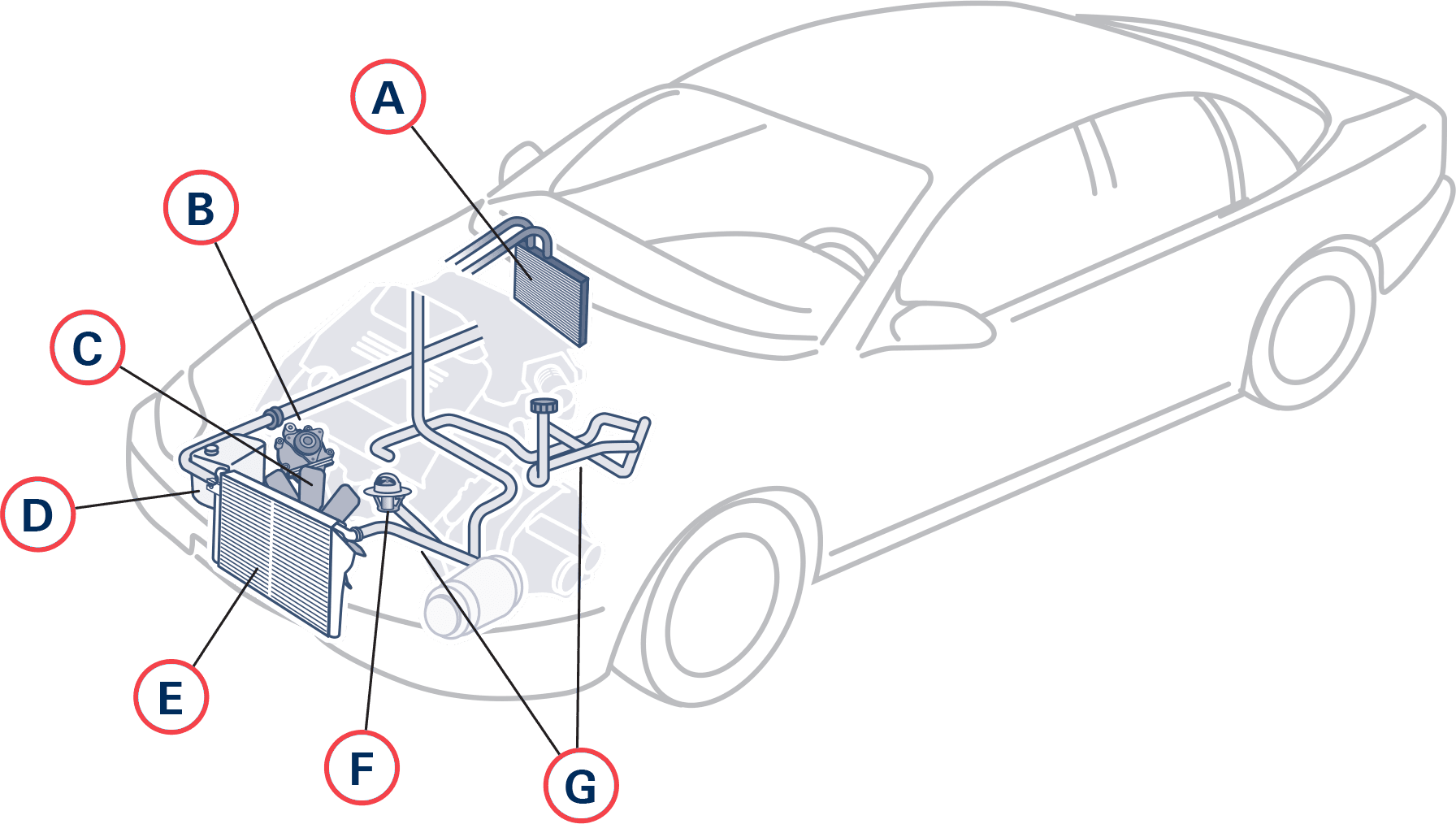Cooling System Check
from $105.00
Book AppointmentThe engine cooling system affects your car’s overall dependability and your engine’s longevity. Cooling systems have advanced over the years with new coolant formulations and new radiator designs and materials. If you suspect a problem with your cooling system, you should have it checked immediately.

 Heater Core
Heater Core
Request Quote
The heater core is a small radiator-type device located under the dashboard in the passenger compartment. The temperature knob on the instrument panel controls the temperature control valve located in the engine compartment. Turning the knob toward the warmer setting opens the temperature control valve, allowing coolant from the engine to circulate through the heater core and warm the interior of the car. Inversely, turning the temperature knob toward the cold setting does close the temperature control valve, allowing cool air from the air conditioning system (if the car is equipped with this system) to flow through the heater core and cool the interior of the vehicle.
 Water Pump
Water Pump
Request Quote
The water pump is considered the ‘heart’ of the cooling system and is usually located on the front of the cylinder block. A hose carries cooled coolant from the radiator to the water pump. A belt or chain turns the water pump shaft and coolant enters the center of the pump. The water pump has fan-like blades on an impeller that spins, creating centrifugal force, moving the liquid outward. Coolant is routed through the engine, cylinder heads and intake manifold by way of water jackets. The coolant then absorbs heat from the engine components and, once hot, leaves the engine and enters the radiator once again to begin the next cooling cycle.
 Cooling Fan
Cooling Fan
Request Quote
The cooling fan circulates air through the radiator so it can release engine heat into the surrounding air. With the introduction of fan clutches and electric cooling fans, fans have become more efficient by operating only when they need to. Electric cooling fans also improve the operation of the air conditioning system.
 Coolant Reservoir
Coolant Reservoir
Request Quote
The coolant reservoir or overflow tank is needed because when the coolant gets hot it expands and the overflow holds the extra volume. The tank helps maintain the proper level of coolant and keeps air out of the system.
 Radiator and Cap
Radiator and Cap
Request Quote
Heated coolant flows into the radiator inlet, is passed through a series of tubes and fins that effectively dissipate heat from the coolant.
The radiator cap is responsible for maintaining the proper amount of cooling system pressure. If the amount increases above the set pressure point, a spring-loaded valve in the cap releases extra pressure.
 Thermostat
Thermostat
Request Quote
The thermostat regulates the flow of coolant into the engine keeping it at its optimum operating temperature. The thermostat is closed when the engine is cold. As the engine heats up, the thermostat opens and allows coolant from the radiator to circulate.
 Hoses
Hoses
Request Quote
Hoses carry coolant to and from the radiator and heater core assembly. Hoses that are spongy to the touch or that have cracks present should always be replaced.

